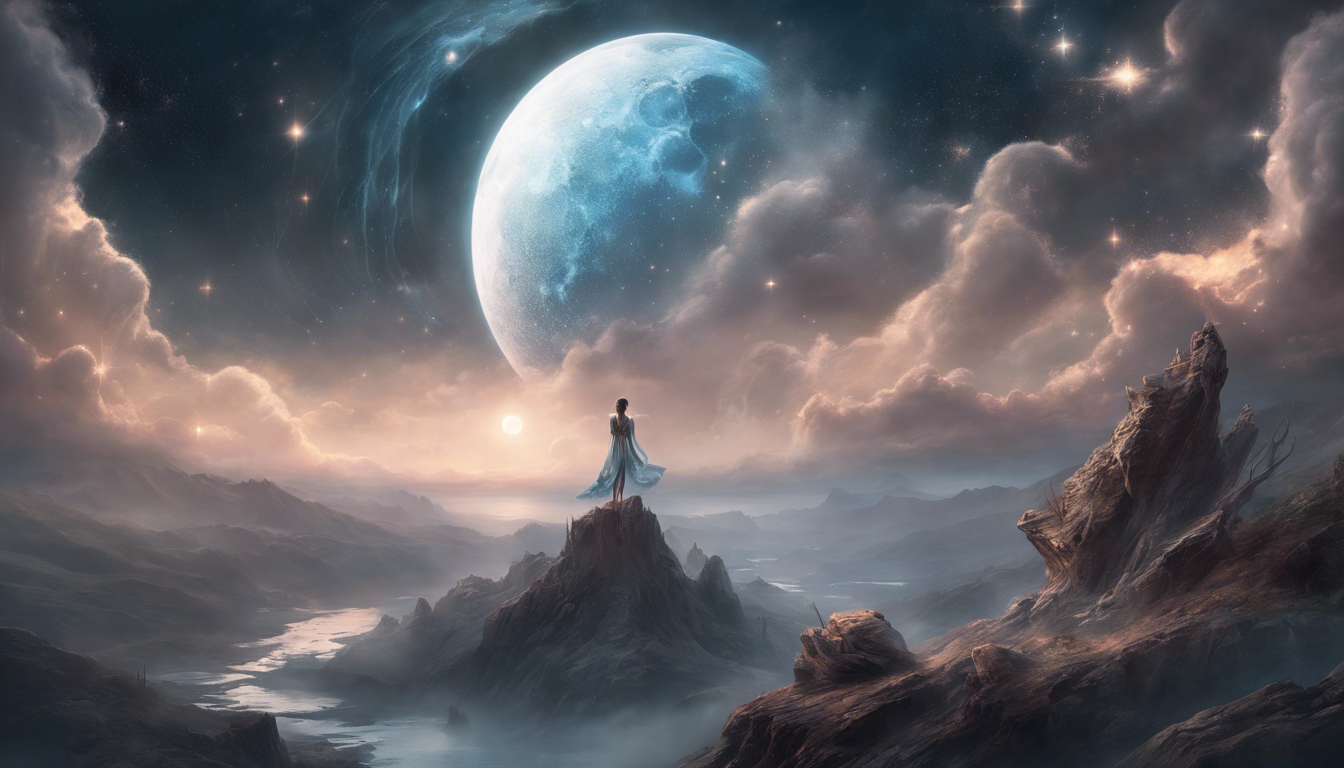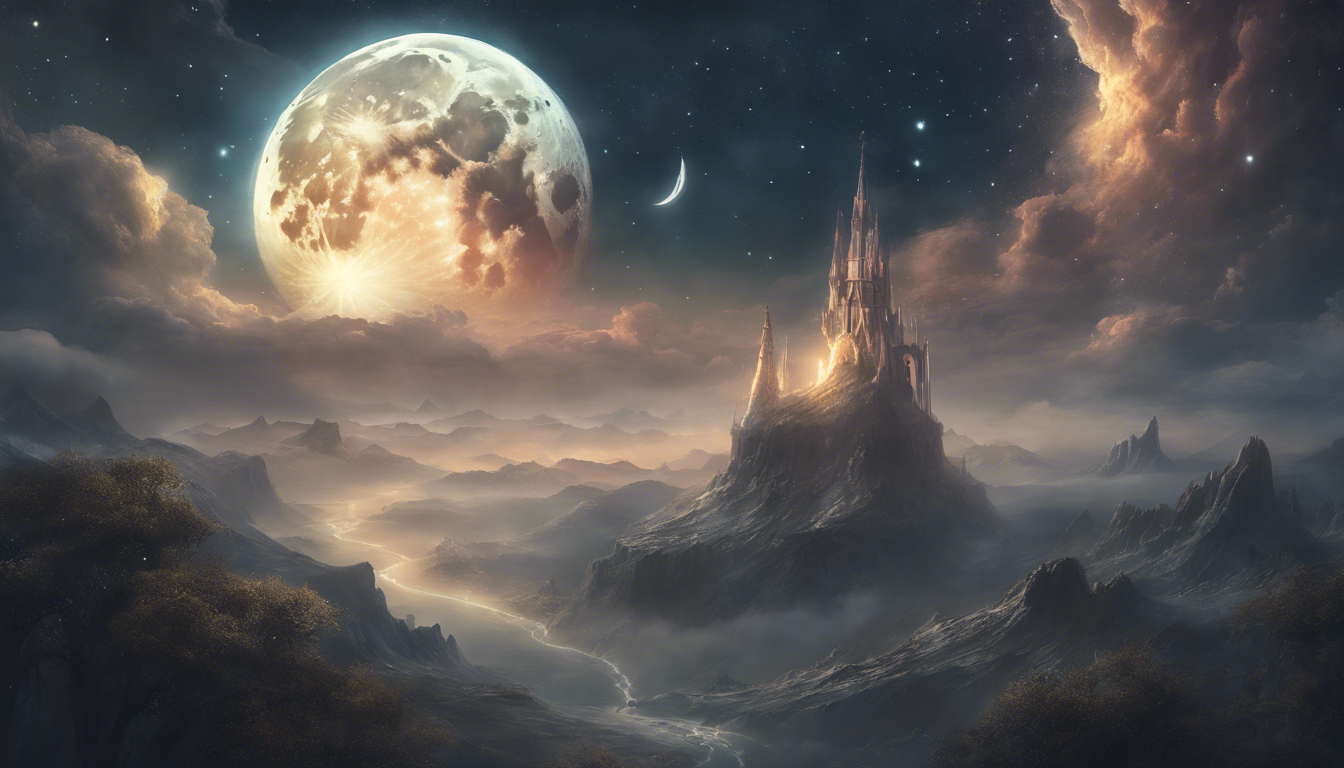Unveil the mystical bond between stars and the moon in the cosmic dance of the universe. Join me on a journey to explore this enchanting connection that has fascinated humanity for centuries.
The visible relationship between stars and the moon

Have you ever looked up at the night sky and marveled at the beauty of the stars and the moon? The celestial bodies that adorn our sky have captivated humans for centuries, inspiring myths, art, and scientific exploration. In this article, we will delve into the visible relationship between stars and the moon, exploring their connection and significance.
the stars: beacons of light in the night sky
Stars are distant suns that emit light and energy, twinkling in the dark expanse of the night sky. These luminous orbs have been used for navigation, storytelling, and spiritual guidance throughout history. In many cultures, stars are seen as symbols of hope, wisdom, and divine communication.
The moon, on the other hand, is Earth’s natural satellite, shining brightly in the night sky. It waxes and wanes in a cyclical pattern known as the lunar phases, influencing tides, agriculture, and human moods. The moon’s gravitational pull also plays a role in shaping Earth’s climate and ecosystems.
the dance of the celestial bodies
Throughout the night, the stars and the moon engage in a mesmerizing dance across the dark canvas of the sky. The moon moves in its orbit, sometimes revealing a backdrop of twinkling stars, while at other times, it shines brightly, outshining the faint starlight.
This cosmic choreography has inspired artists, poets, and philosophers, symbolizing the eternal cycles of life, death, and rebirth. The stars and the moon remind us of the interconnectedness of all living beings and the vastness of the universe we inhabit.
the significance of the stars and the moon
Stars and the moon hold deep symbolic meaning in various cultures and spiritual traditions. They are often seen as cosmic guides, illuminating our path and offering insights into the mysteries of existence. By observing the stars and the moon, we can gain a deeper understanding of our place in the cosmos.
As above, so below: this ancient principle reflects the idea that the movements of the stars and the moon mirror events on Earth. Astrologers and astronomers alike study the positions of celestial bodies to predict planetary influences and celestial events, guiding individuals and societies in their pursuits.
In conclusion, the visible relationship between stars and the moon is a testament to the beauty and interconnectedness of the universe. By gazing up at the night sky and contemplating the celestial bodies that adorn it, we can tap into a sense of wonder, awe, and humility that transcends time and space.
The role of stars in lunar navigation

Exploring the ancient art of navigation by stars and the moon reveals a fascinating relationship between the celestial bodies and mankind’s journey across the seas. In this article, we delve into how stars play a crucial role in lunar navigation, guiding sailors and travelers alike through the vast expanses of the open ocean.
Understanding Celestial Navigation
Stars have been used for centuries as a natural GPS system for navigation, particularly during night voyages. Sailors would rely on the positions of the stars to determine their location, course, and the time of day or night. The moon, with its regular phases, also served as a crucial celestial reference point for mariners.
The Northern Star and Polaris
One of the most well-known stars used in celestial navigation is the Northern Star or Polaris. Located almost directly above the North Pole, Polaris remains nearly fixed in the sky, making it a reliable marker for determining north. Sailors in the northern hemisphere would use Polaris to orient themselves and navigate towards their desired destinations.
Constellations and Navigation
Constellations have also played a significant role in lunar navigation. By identifying specific star patterns in the night sky, sailors could pinpoint their location and follow a predetermined course. Constellations like Orion, Ursa Major, and Cassiopeia provided reliable reference points for navigating both land and sea.
The Moon’s Influence
The moon complements the role of stars in navigation by providing additional reference points and aiding in determining latitude and longitude. The moon’s phases and position relative to certain stars helped sailors calculate their position on the open ocean accurately.
Modern Navigation Technology
While modern navigation tools like GPS have largely replaced traditional celestial navigation methods, the art of using stars and the moon to navigate the seas remains a valuable skill. Understanding the relationship between stars and lunar navigation not only connects us to ancient seafaring traditions but also highlights the enduring impact of celestial bodies on human exploration.
In conclusion, the stars and moon continue to inspire awe and wonder in their role in guiding travelers across the waters. By appreciating the significance of celestial navigation, we gain a deeper appreciation for the interconnectedness of the natural world and the ingenuity of those who navigated the seas under the guidance of the stars.
Cultural connections between stars and the moon

The cultural connections between stars and the moon have been a source of inspiration and fascination for societies across the globe since ancient times. Let’s explore the various ways in which different cultures have intertwined the celestial bodies of stars and the moon into their beliefs, traditions, and art.
mythological narratives
In many mythological narratives from different cultures, the moon and the stars are often portrayed as celestial beings or deities. For example, in Greek mythology, the goddess Artemis is associated with the moon, while her twin brother Apollo is linked to the sun. The stars are sometimes seen as the souls of ancestors watching over the living in various African cultures.
symbolism and meanings
The cultural connections between stars and the moon also extend to symbolism and meanings attributed to these celestial bodies. In some Native American beliefs, the moon is seen as a symbol of feminine energy and intuition, while the stars are associated with guidance and protection. Similarly, in Chinese culture, the moon symbolizes harmony, while certain stars are believed to represent luck and prosperity.
art and poetry
Artists and poets have often drawn inspiration from the beauty and mystique of the stars and the moon. Throughout history, countless paintings, poems, and songs have been dedicated to portraying the ethereal connection between these celestial bodies. From Vincent van Gogh’s “Starry Night” to ancient Japanese haiku poetry celebrating the moon, the artistic representations are endless.
celestial rituals and celebrations
Many cultures around the world have specific rituals and celebrations related to the stars and the moon. For example, the Mid-Autumn Festival in East Asia is a celebration of the harvest moon, where families gather to admire the full moon, eat mooncakes, and express gratitude for the abundance of the season. In some African tribes, ceremonies are held during lunar eclipses to appease the spirits and ensure a good harvest.
In conclusion, the cultural connections between stars and the moon are a testament to the universal fascination and reverence for these celestial bodies. They transcend geographical boundaries and time, continuing to inspire wonder and creativity in people of all backgrounds.
Scientific explanations for the celestial bond
the relationship between stars and the moon has captivated humanity for centuries, sparking wonder and curiosity about the mysteries of the cosmos. from a scientific perspective, this celestial bond can be explained through various phenomena that highlight the interconnectedness of these two celestial bodies.
gravitational attraction: the force behind the bond
stars and the moon are interconnected through the force of gravity. the gravitational pull of the moon influences the tides on earth, showcasing a direct interaction between these celestial entities. similarly, the gravitational pull of stars within a galaxy impacts the motion and structure of the cosmic bodies within its vicinity, illustrating a gravitational bond that extends throughout the universe.
lunar phases and stellar visibility
the lunar phases, which result from the changing position of the moon in relation to the sun and earth, can affect the visibility of stars in the night sky. during a full moon, the brightness of the moon may outshine certain stars, making them less visible to the naked eye. conversely, during a new moon, when the moon is not illuminated by the sun, the stars appear more prominent against the dark sky, enhancing their visibility.
cosmic evolution and shared origins
scientific studies suggest that stars and the moon share a common origin in the vast expanse of space. stars are born within nebulae, where gravitational forces lead to the formation of these luminous bodies. similarly, the moon is believed to have been created from the debris of a collision between earth and another celestial body, indicating a shared cosmic heritage between these two entities.
stellar navigation and lunar guidance
throughout history, stars and the moon have served as essential navigation tools for travelers and explorers. stars have been used for celestial navigation, guiding seafarers and adventurers across vast oceans. meanwhile, the moon has played a crucial role in determining lunar calendars and aiding in nighttime orientation, showcasing the practical applications of this celestial bond in human endeavors.
the celestial bond between stars and the moon transcends the boundaries of space and time, uniting these cosmic entities in a symphony of gravitational forces and shared origins. by exploring the scientific explanations behind this celestial bond, we gain a deeper appreciation for the interconnectedness of the universe and the wonders of the night sky.


Article written by Dera
Greetings, I am Dera, a 35-year-old individual with a deep passion for spirituality. Through my website, I aim to share my insights and knowledge to help others on their spiritual journey. Join me on the path to inner peace and enlightenment.